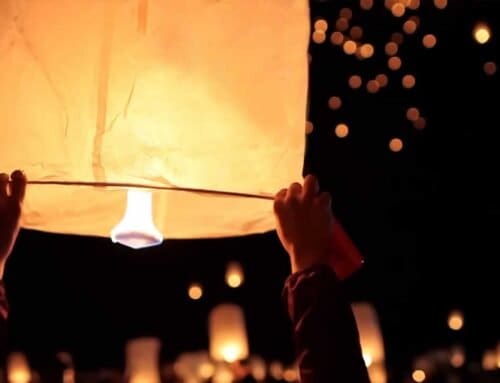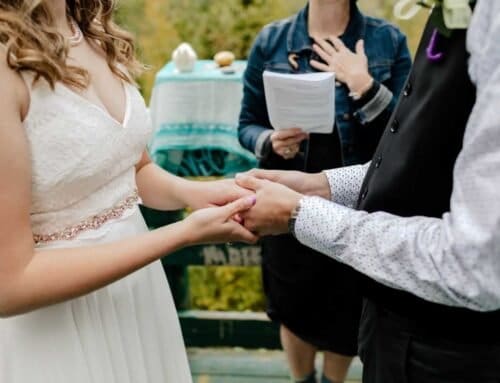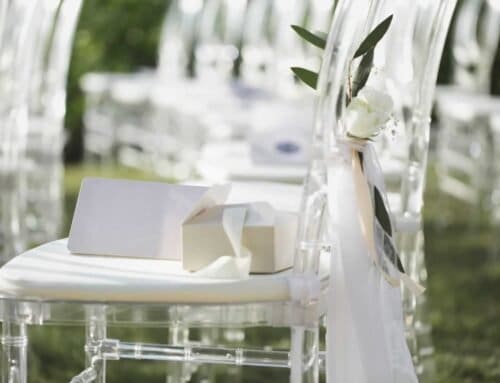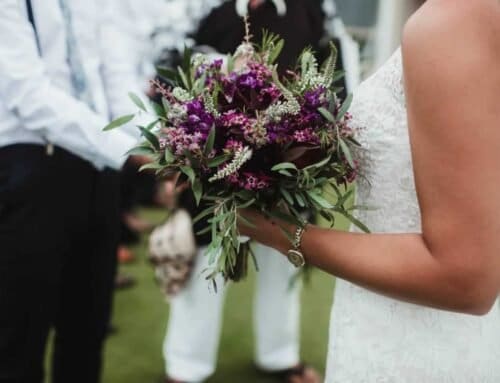The Ties That Bind Ceremony
A Symbol of the Strength of Family in Marriage The Ties that Bind ceremony is a great addition to a family vow renewal ceremony. It adds a truly unique element [...]
A Symbol of the Strength of Family in Marriage
The Ties that Bind ceremony is a great addition to a family vow renewal ceremony. It adds a truly unique element to your ceremony that your children, friends, and family will remember. The symbolism of the Ties that Bind ceremony lies in the belief that children are woven forever into the fabric of a family. As a family, a couple and their children are stronger than any one of them could be as a lone individual.
The ceremony involves utilizing ribbons of different colors to create connections between you and your spouse and your children as they are braided in the rope that represents the strength of your family. Without the ribbons from the children, a couple’s ribbons cannot be braided into a strong rope. Each member of the family should select their own color of ribbon to represent their uniqueness. For it is this unique ness, yet sameness that is the strength of the family.
Selecting Your Colors
The colors of ribbons you select for yourselves, and your children can be based on favorite colors, vow renewal palette colors, or the spiritual meaning of colors.
- Red symbolizes energy, passion, strength, courage, physical activity, creativity, warmth, and security.
- Orange symbolizes the individual’s relationship to the external world, thoughtfulness, and creativity.
- Yellow symbolizes intellect, creativity, happiness and the power of persuasion.
- Green symbolizes money, luck, prosperity, vitality, and fertility. Green is also the color of healing; it signifies balance and peace.
- Blue is the color of spirituality, intuition, inspiration and inner peace. It indicates serenity, contentment and spiritual development.
- Purple is associated with power, both earthly and spiritual.
- White is associated with truth, purity, cleansing, healing and protection.
- Gold represents understanding and luck. It is also symbolic of God in Christianity.
- Pink represents unconditional love, love requiring nothing in return.
- Brown is the color of the earth and represents practicality, material success, concentration and study.
- Black is the absence of color. It represents the unconscious and mystery.
The Ties That Bind Ceremony
The ribbons should be cut in lengths of 9 feet before the ceremony, and each child should have two identical ribbons, and each parent should have one for each child (3 kids equals three ribbons per parent). These ribbons can be placed on the ceremonial table, much like you would with a unity candle. The Ties that Bind ceremony can be placed anywhere after the welcoming of guest and before the exchange of rings or kiss by the couple.
When you are ready to begin the ceremony, first you and your spouse should select your ribbons from the table, and then each of the children should walk to the table to select their ribbons and come to stand before you with each of you holding your ribbon from one end. Each parent should reach forward and capture the other end of each child’s ribbon in their hand and present them with the other end of their ribbon. This is going to create a complex web of ribbons connecting you and your children to one another. As you capture each child’s ribbon, you should say something like:
This ribbon represents the ties that bind us together forever. White, they may go unseen much of the time, they are always there creating an unbreakable connection between us.
Once all of the ribbons are raised, connecting you and your children, you can say:
Today, we renew our promise to love and cherish you. To always be connected, no matter where life’s journey takes us. We are a family, and there is no stronger bond than that.
Today we will gather these ribbons together, braid, and tie them to remind us always of the strength of our family and the ties that bind us.
You then have the children release their end of the ribbon and turn to your spouse to bring all of the ribbons together. Your spouse then ties a fisherman’s knot on one end of the ribbons to secure them together and holds on to the knot tightly. You then braid the ribbons together, symbolizing the unity of the family and then tie the end with the same fisherman’s knot.
While braiding the Ties That Bind ribbons, you may wish to have someone read an explanation of the ceremony. You may also simply play music or have a song sung. We have put together a sample reading that you can use in your ceremony:
Today, [name] and [name] have chosen to braid these ribbons together into a single cord. Each strand has a significant meaning.
The [color] ribbon represents [name] and the [qualities he/she brings to the family]. (repeat for each family member)
In braiding these strands together, [name] and [name] have demonstrated that their marriage is more than a joining of two lives together. It is a unity with their children as well. They have chosen to recognize their commitment to their children and the contribution each of them make to the fabric of their marriage as they are woven into every aspect of it.
Note: The fisherman’s knot is used as it is one of the most durable knots consisting of two interlocking, overhand knots that create a symbolic figure eight. This simple knot strengthens under pressure and becomes sturdier when it gets wet, making it ideal for its symbolism and creating a family keepsake.
Acknowledgments: IDoStill.com created this ceremony based on a number of other popular wedding ceremonies including handfasting, cord of three strands, and marriage knots.








